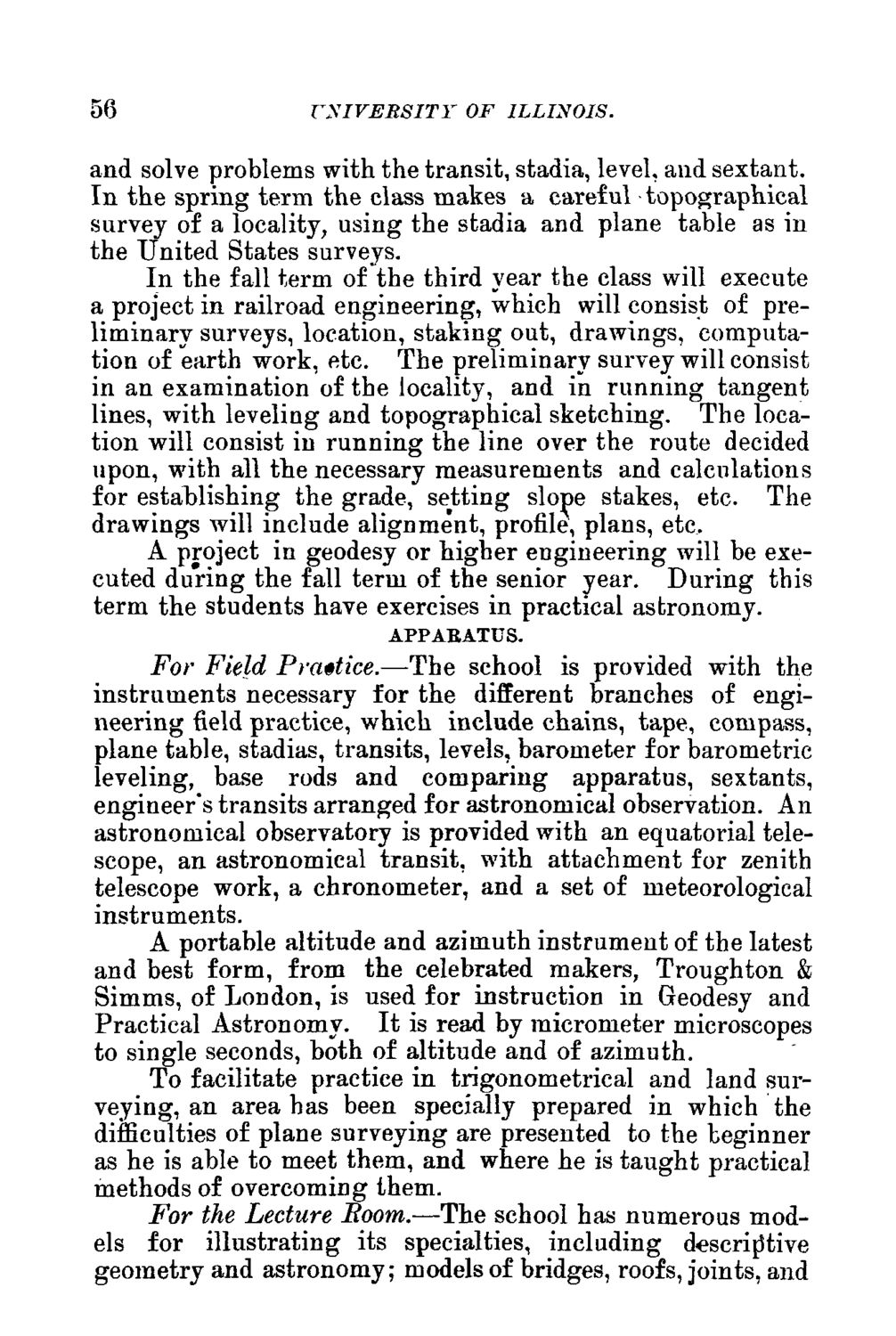| |
| |
Caption: Course Catalog - 1888-1889
This is a reduced-resolution page image for fast online browsing.

EXTRACTED TEXT FROM PAGE:
56 VXIVEBSITT OF ILLINOIS. and solve problems with the transit, stadia, level, and sextant. In the spring term the class makes a careful topographical survey of a locality, using the stadia and plane table as in the United States surveys. In the fall term of the third year the class will execute a project in railroad engineering, which will consist of preliminary surveys, location, staking out, drawings, computation of earth work, etc. The preliminary survey will consist in an examination of the locality, and in running tangent lines, with leveling and topographical sketching. The location will consist in running the line over the route decided upon, with all the necessary measurements and calculations for establishing the grade, seating slope stakes, etc. The drawings will include alignment, profile, plans, etc, A project in geodesy or higher engineering will be executed during the fall term of the senior year. During this term the students have exercises in practical asbronomy. APPARATUS. For Field Practice.—The school is provided with the instruments necessary for the different branches of engineering field practice, which include chains, tape, compass, plane table, stadias, transits, levels, barometer for barometric leveling, base rods and comparing apparatus, sextants, engineer's transits arranged for astronomical observation. An astronomical observatory is provided with an equatorial telescope, an astronomical transit, with attachment for zenith telescope work, a chronometer, and a set of meteorological instruments. A portable altitude and azimuth instrument of the latest and best form, from the celebrated makers, Troughton & Simms, of London, is used for instruction in Geodesy and Practical Astronomy. It is read by micrometer microscopes to single seconds, both of altitude and of azimuth. To facilitate practice in trigonometrical and land surveying, an area has been specially prepared in which the difficulties of plane surveying are presented to the beginner as he is able to meet them, and where he is taught practical methods of overcoming them. For the Lecture Boom.—The school has numerous models for illustrating its specialties, including d«scrip"tive geometry and astronomy; models of bridges, roofs, joints, and
| |